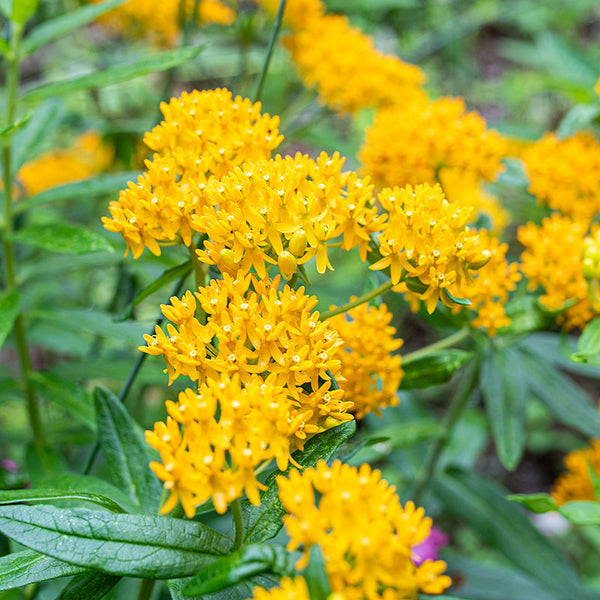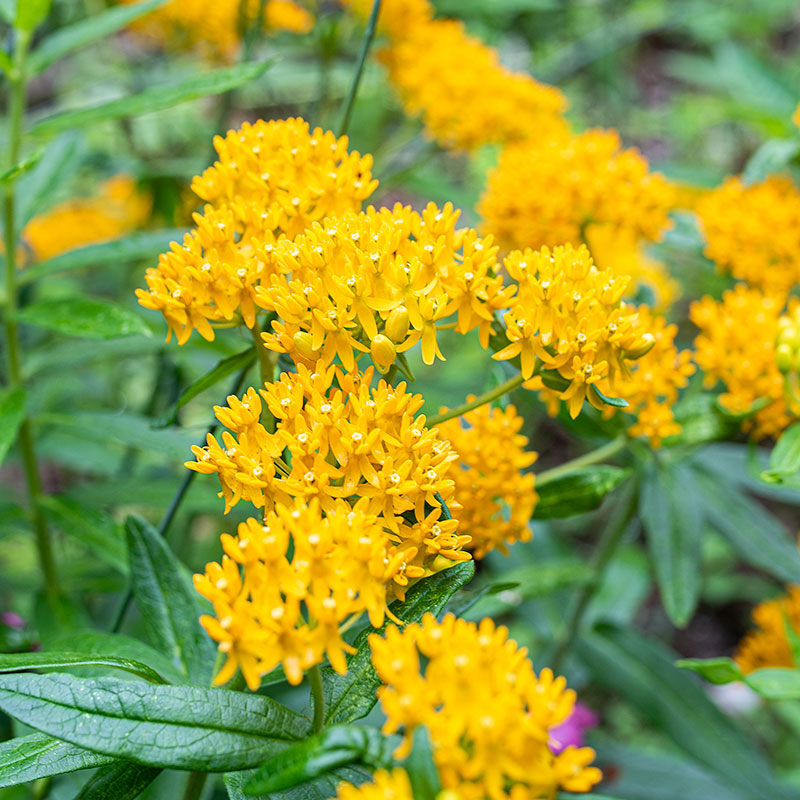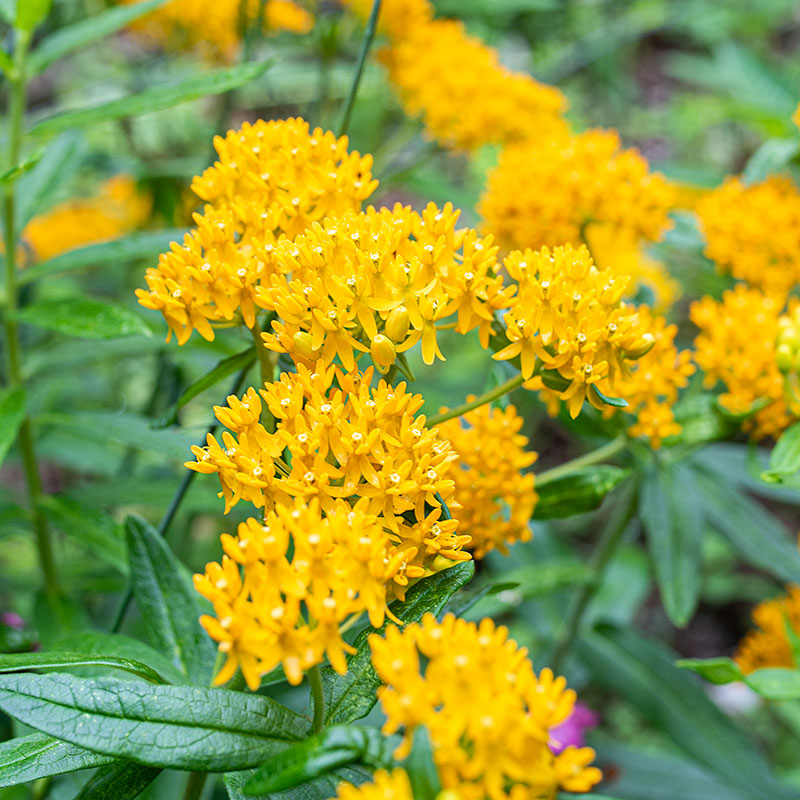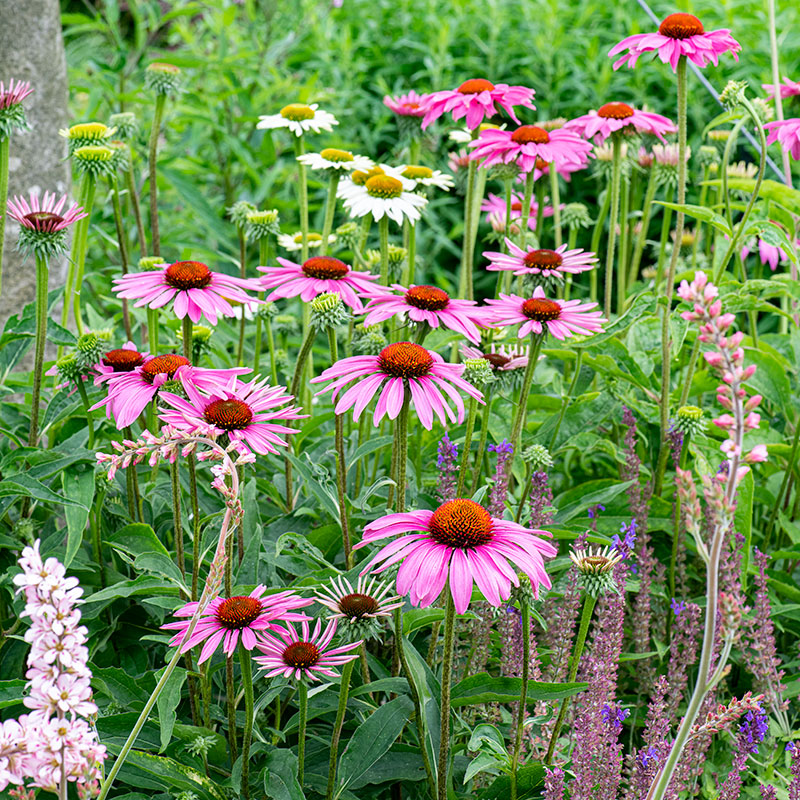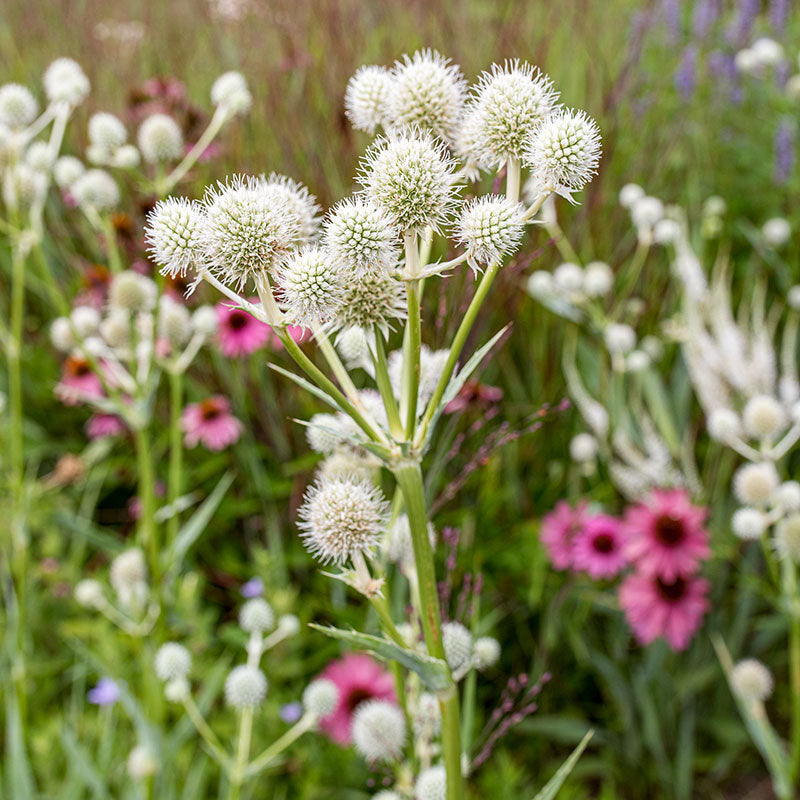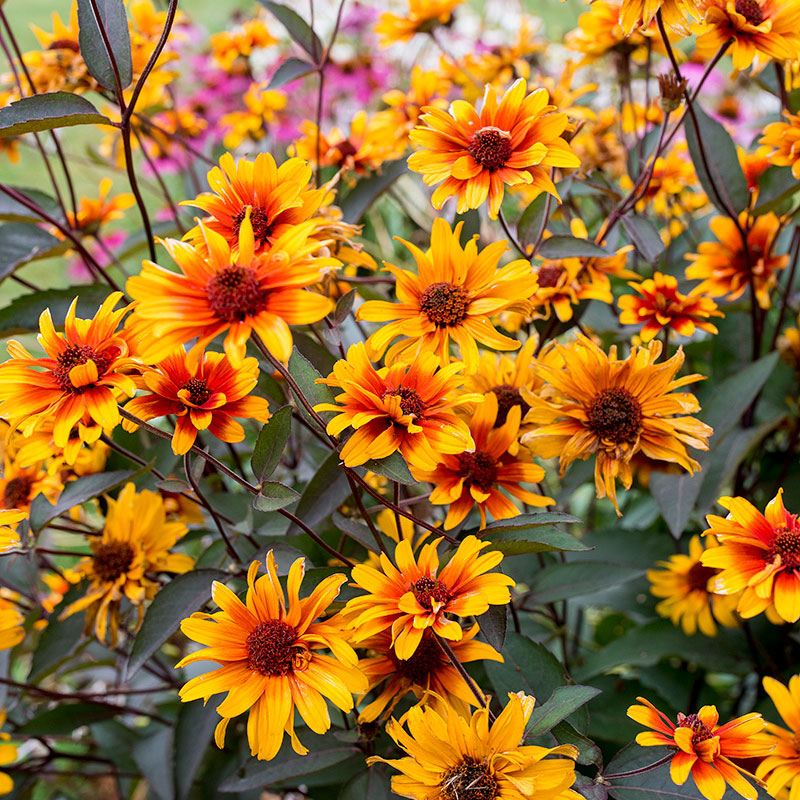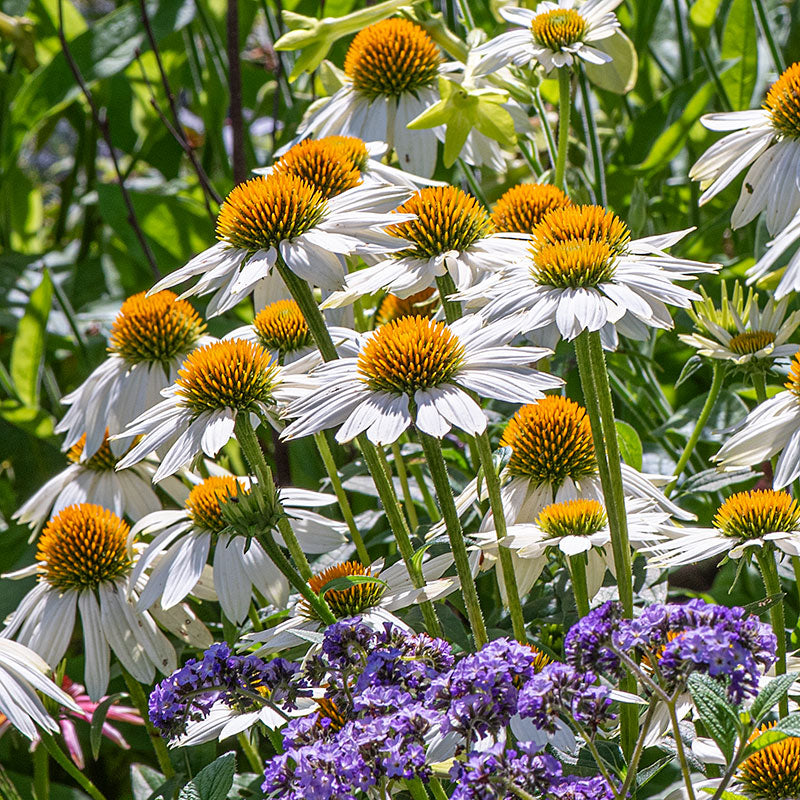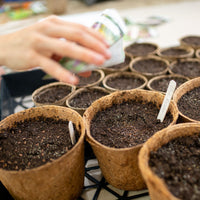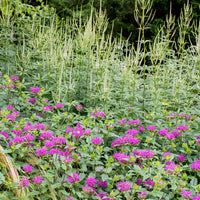SOWING INSTRUCTIONS
Depth:
Barely cover 1/16"
Sprout Time:
21-40 days after chill
Starting Indoors:
Stratify for 3-6 weeks in late winter. To stratify, soak seeds for several hours and place in moist vermiculite in a plastic bag and store in the refrigerator. Check often for germination. Eight to 10 weeks before last frost, remove pre-chilled seeds from refrigerator and sow in pots. Keep at 60-70°F. Transplant with care to avoid disturbing the small taproot.
Starting Outdoors:
Direct sow in fall or earliest spring, or winter sow into pots in the shade, covered with a thin layer of clean sand and a wire screen to keep out mice and voles. Check for moisture at regular intervals.
PLACEMENT & CULTIVATION
Butterfly weed makes a showy addition to wildflower gardens and edges of sunny borders. A top beneficial insect host, it nurtures many species of helpful bugs and attracts bees and butterflies too! Mark its spot in the garden for it is late to emerge in spring and the taproots do not like disturbance. A host plant to Monarch and other butterfly and moth species. Self-sows. Caution: handle carefully, as all parts are mildly poisonous, but toxicity is concentrated in the sap.
Watering Details:
These plants prefer drier soil, and can tolerate drought. 1" of water per week until established, then water during prolonged dry weather.
Soil pH:
Most pH levels are tolerated.
Fertilizer:
Butterfly weed is not a heavy feeder, so a single application of slow-release organic fertilizer in springtime is sufficient. Or, provide with a thin layer of compost each spring.
Diseases & Pests:
Butterfly weed can occasionally be susceptible to rust, especially in the southeast, but this can be avoided by preventively spraying with an organic fungicide every two weeks or so, depending on local weather conditions.
When to Cut for Bouquets:
Cut when florets are mostly open for fresh arrangements. Plants have a milky sap. For dry use cut when seed pods have started to dry.






























